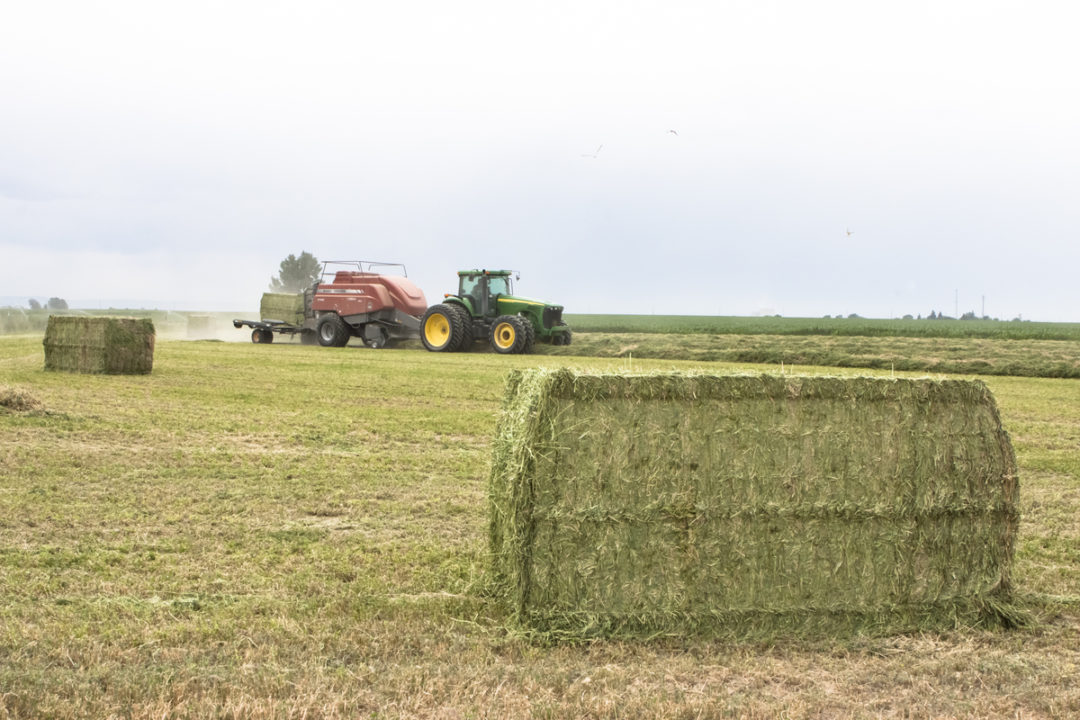Oh, the wonderful world of fiber!
It’s a world full of confusing, shifting, mislabeled and misunderstood compounds and structures. It’s a world so important that it keeps doctors, nutritionists, federal regulators, timber salesmen and graduate students busy and off the streets. It’s also a world that feeds our livestock. Because fiber is the stuff that plants are made of.
Fiber is another name for “cell wall.” A bit of chemistry here: Plant cells are not quite like your cells and my cells (in case you haven’t looked lately). Each plant cell is surrounded by a relatively stiff wall-like structure called, not surprisingly, a cell wall. These cell walls give plant cells strength and stability – kind of like an external skeleton or the scaffolding surrounding a building under construction. This structural integrity is why Douglas fir trees can grow to 300 feet and cattle, thankfully, cannot.
What is the most abundant carbohydrate in the world? Not table sugar, or starch, or even white bread. The most plentiful carbohydrate in the world is cellulose, a type of fiber that is found in most plant cell walls. Cellulose is usually combined with other types of cell wall compounds to form complex fibrous structures. But there is one special instance in nature in which cellulose is found in a pure form: We call it cotton.
But cellulose is only one type of plant fiber. Other types of fibrous substances in our forages are hemicellulose, which is chemically similar to cellulose but is spelled differently; lignin, which is not digestible at all; pectin, which is typically found in fruits; and silica, which is often found in rice straw and sand. Silica is not very nutritious.
One basic rule: The nutritional value of a forage is primarily determined by the amount and type of fiber in that forage. The higher the fiber, the lower the digestibility. Also, the higher the fiber, the lower the intake. Some plants naturally have more fiber than others. For example, grasses usually contain more fiber than legumes. Nonetheless, the basic relationship between fiber and digestibility always remains the same. Also, as forages grow and mature, their fiber levels increase and the digestibility of this fiber decreases. Translation: Older, more fibrous plants are poorer-quality feeds. (Not exactly a surprising concept.) Because fiber levels are so closely related to nutritional value, wouldn’t the accurate knowledge of fiber values help us make better decisions about forages, like when we try to buy hay? But there has been a long-standing problem with this …
Historically, fiber has always been labeled crude fiber. Actually, this label is quite misleading. For many years, every nutritionist knew that the crude fiber assay was inaccurate and, well, crude. A crude fiber number told us very little about the real nutritional value of a forage. The crude fiber assay missed a lot of fibrous things in plants and incorrectly identified other things. Although crude fiber was pretty good at estimating the cellulose content of plants, it completely missed lignin, which is the most critical factor in changing a plant’s digestibility. It also missed some of the hemicellulose and nearly all of the pectin. Nonetheless, the crude fiber assay was the only game in town, and it became the legal standard for labeling animal feeds. In fact, you’ll still see it on most animal feed tags.
Which brings us to one wild and crazy guy. Back in the 1950s, a young scientist from a dairy farm near Seattle went to work at the USDA nutritional lab in Beltsville, Maryland. His name was Peter Van Soest. Van Soest danced to the beat of a different drummer. He stayed in his lab for days without a break, slept at odd hours and generally did not obey too many office rules.
Van Soest was, however, a supremely gifted scientist, and he clearly recognized that crude fiber was a misleading value. He devoted his research to designing a better fiber analysis – and he succeeded. From his brilliant work came two assays that have, over the years, revolutionized our understanding of livestock nutrition. Those assays are called neutral detergent fiber (NDF) and acid detergent fiber (ADF).
Those assays have completely changed how we predict forage digestibility, intake and growth. Using Van Soest's methods, we can now derive forage digestibility values that are biologically coherent, and we can better predict how forages change nutritionally as they grow and mature. Think about Van Soest the next time you see a forage report, or make hay, or watch your animals graze pasture.
And that, as they say, is the rest of the story.












